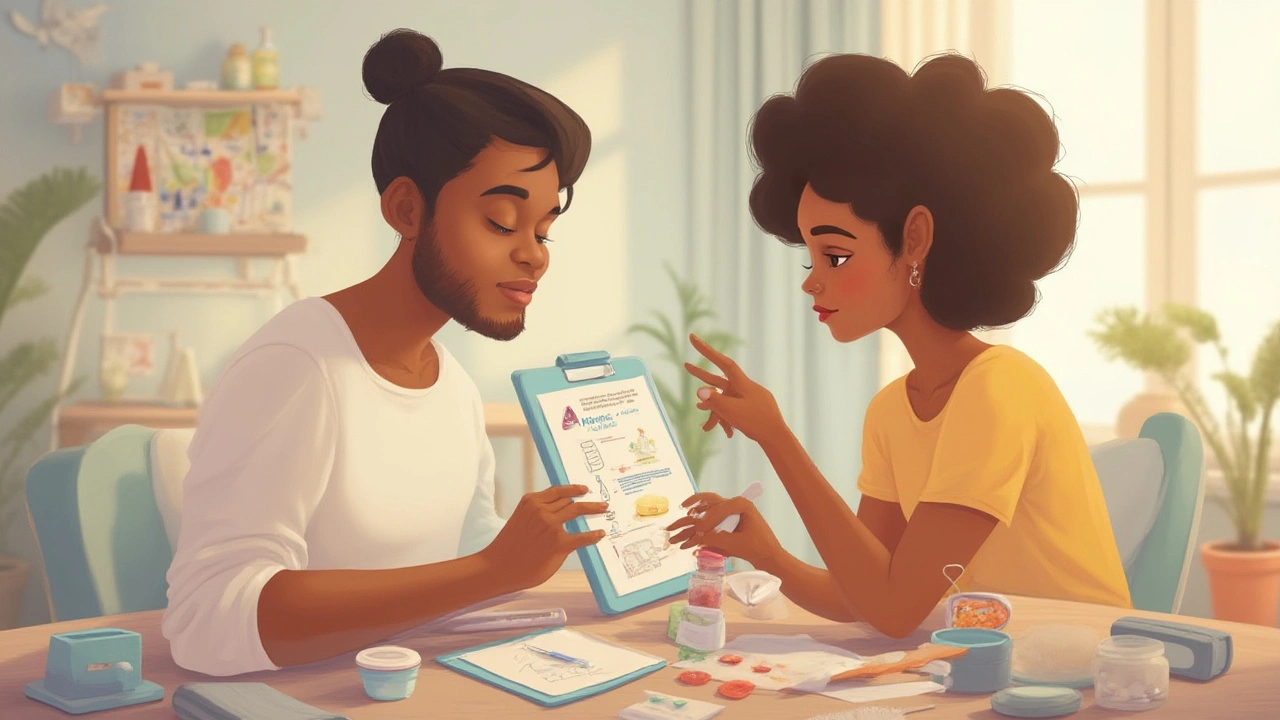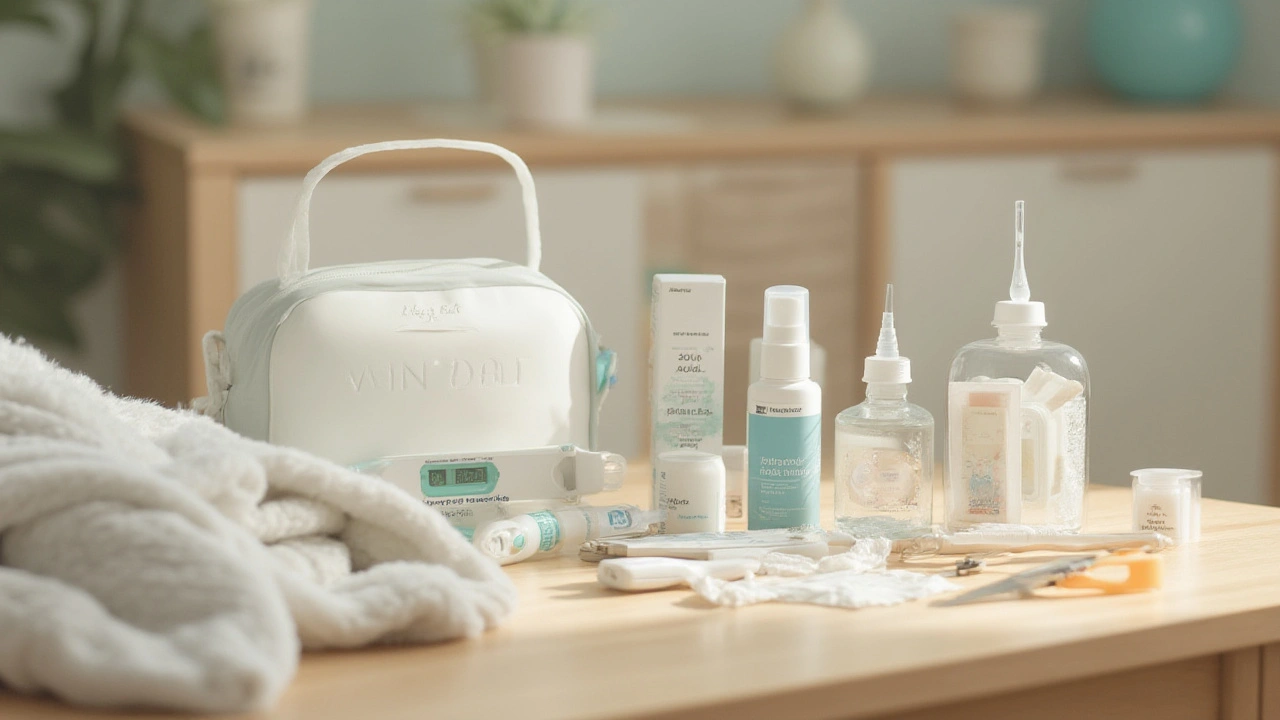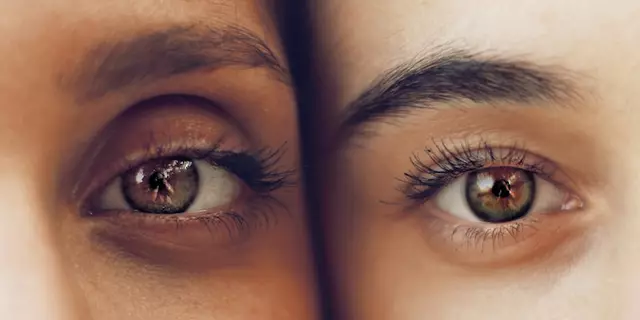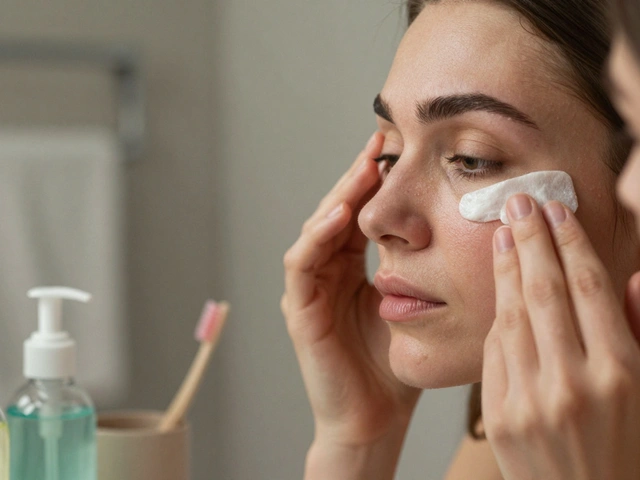Picture this: you finally bring your new baby home, and the first week whizzes by fueled by coffee, adrenaline, and that wonderful new baby smell. Suddenly, there’s a tiny scrape, a fever, or the sniffles. That little sense of panic? It melts away if you’ve got a newborn first aid kit ready to tackle those unexpected firsts. Many parents don’t think about first aid until they need it—often at 2 a.m., when stores are closed and everything feels urgent. A well-stocked, thoughtfully prepared kit won’t erase all the worry, but it makes handling minor mishaps a whole lot easier.
Why a Dedicated Newborn First Aid Kit Matters More Than You Think
Some parents wonder if a generic first aid kit will do the job. The truth is, most regular first aid kits are built for adults and simply can’t handle a baby’s needs. Infants’ skin is delicate. Their immune systems aren’t at full strength. Even the most basic items—like scissors or standard bandages—can be unsafe or useless. For instance, a wipe that works for you may cause a rash for your baby. An adult thermometer? Way too big and usually too slow. Babies need supplies tailored exactly for them, in size and gentleness.
This isn’t just about being extra-cautious or buying a bunch of specialty gear. Genuine emergencies—like choking or sudden fever—often look different in infants. Small differences save time and provide real peace of mind. Parents say that having an infant-specific thermometer alone can spare a frantic dash to urgent care.
For a clearer picture, check out this handy comparison table of common adult vs. newborn kit essentials:
| Item | Standard First Aid Kit | Newborn First Aid Kit |
|---|---|---|
| Thermometer | Oral/digital stick | Rectal/temporal forehead (infant-friendly) |
| Bandages | Regular adhesive strips | Breathable, hypoallergenic minis |
| Nasal Aspirator | Rarely included | Soft bulb syringe or suction tube |
| Ointments | Triple antibiotic cream | Zinc oxide or petroleum jelly (gentle, safe for babies) |
| Scissors | Heavy duty, long blades | Safety rounded-tip nail scissors |
So, a newborn’s kit isn’t just a smaller version of what you’d use for yourself. Everything needs to be milder, safer, and—often—totally different. Besides, nobody wants to fiddle with a sharp pair of nail clippers at 3 a.m. when trimming wiggly newborn nails. Specialized tools not only keep your baby safer, but they make your life easier, too.

The No-Nonsense Checklist: What to Put in Your Newborn First Aid Kit
Let’s get practical. You don’t need a suitcase full of stuff, but you do need a smart mix of essentials. This isn’t about overpreparing—it’s about being prepared for real scenarios. Here’s a list that covers what you’ll reach for again and again, and won’t waste space.
- Rectal or Forehead Thermometer (Digital, fast-read): Pediatricians agree that accurate temperature checks are crucial for newborns, especially in the first three months. Even a slight fever can mean a trip to the doctor. Infrared forehead types are less invasive and great for quick checks, but a rectal thermometer is the gold standard for accuracy in infants under three months.
- Nasal Aspirator (Bulb syringe or suction tube): Babies can’t blow their noses, and a stuffy nose can really mess up eating and sleeping. Skip those plastic bulbs hospitals give out and choose a high-quality suction-type aspirator that’s easy to clean and gentle on tiny nostrils. The FridaBaby NoseFrida is a cult favorite for a reason.
- Digital Nail File or Safety Scissors: Newborn nails are thin and sharp, but traditional clippers can cause tiny cuts. Rounded-tip scissors and electric nail files basically eliminate the risk of nicking that super soft skin. Some kits include both, but the safest bet is electric filing during nap time (parents swear by it for fussy babies).
- Hypoallergenic Bandages: Even small scratches need covering, and infants react to latex and adhesives much more than adults. Look for specific baby or hypoallergenic types—Disney characters optional but fun.
- Saline Nasal Drops: Pair these with your aspirator for extra ease in clearing little noses. Many parents overlook this, but it makes suction gentle and much more effective.
- Alcohol-Free Wipes (Sterile): For cleaning minor scrapes. Alcohol and fragrance can burn newborn skin, so go for medical-grade, scent-free options.
- Pediatric Pain Reliever (Acetaminophen, infant drops): Only needed if doctor-approved, but always good to have on-hand if your pediatrician gives the green light. Keep the dosage chart and syringe close by—measuring correctly is everything.
- Digital Timer (or use your phone): Time those breaths, fevers, or doses exactly. Seconds feel like ages with a sick newborn in your arms; a timer helps you think clearly when stress peaks.
- Zinc Oxide or Petroleum Jelly: Treats diaper rash quickly and safely. Traditional antibiotic creams aren’t always baby-safe and can worsen rashes in newborns.
- Sterile Gauze Pads and Cotton Swabs: For covering larger scrapes or navel care without irritating new skin. Cotton swabs (the kind designed for infant use) help apply ointments gently.
- Infant Medicine Dropper/Syringe: Precise dosing saves headaches, and droppers are ten times easier than trying to pour from a bottle. Mark your dropper with your baby’s exact dose to prevent confusion in the middle of the night.
- Emergency Contact Sheet: Write out your pediatrician’s number, poison control, and your closest after-hours clinic. Even with phones, having a physical copy saves crucial minutes if your hands are tied up with a squalling baby.
- Small Flashlight: Lighting matters for inspecting rashes, amber teething beads, or pulling splinters (rare, but possible if baby has curious older siblings).
- Thermal Blanket or Swaddle: Not strictly a ‘first aid’ product, but very helpful for temperature regulation or shock in case of high fevers.
Some parents add extras like a baby toothbrush for teething pain or a thermometer sticker for the baths—feel free to personalize for your specific needs, but don’t clutter with items you’ll rarely use.
Here’s a pro tip: rotate any time-sensitive items or medication as your baby grows. It’s easy to forget that things expire or are outgrown, especially in the sleep-deprived haze of early parenting. Mark your calendar to check your kit every three months, or set a reminder in your phone.
What about storage? Use a small, easily accessible case with separate pockets or see-through compartments. In emergencies, no one wants to dig through a messy pile searching for a tiny syringe. If you live in a multi-level house, keep a backup mini-kit wherever you spend most of your time. New parents have enough on their list—make this easy on yourself.

Tips and Tricks from the Real World: How to Use Your Newborn First Aid Kit Wisely
Now you’ve got an awesome, well-stocked kit—how do you actually use it to make life easier, not just fill another shelf? Knowing what to do is as important as knowing what you own. Here’s what seasoned parents and nurses wish they’d learned earlier.
- Practice before you need it. Use the thermometer on your baby while they’re calm so you’re not fumbling during their first fever. Try out the aspirator (without saline) just to see how it fits. Get familiar with each gadget so you know how they work under pressure.
- Make a dosing cheat sheet. Write down your baby’s current weight and the correct medication doses next to each med. Tape it inside the kit. When your baby is screaming, and you’re half-awake, this small step helps avoid mistakes.
- Organize by type, not by size. Put all medicine-related stuff together (dropper, pain reliever, thermometer), all bandages and wound care in another pocket. No one has time to search for the right bandage during a meltdown.
- Keep the kit out of reach. It sounds obvious until you see a toddler spreading ointment everywhere. Store it high and tight. But make sure every caretaker knows where it is—babysitters, grandparents, and night nurses.
- Have a travel version. Emergencies don’t stick to home base. A small Ziploc with a few absolute essentials (thermometer, aspirator, bandage, medicine) fits easily in diaper bags or strollers.
- Refresh your first aid skills. It’s scary to imagine, but infant CPR and choking first aid are absolute musts. Many hospitals or pediatrician offices offer quick classes, and videos from groups like the American Red Cross can be lifesavers. Print out the main steps and tuck them in your kit. Seconds count with infants.
- Read labels every time. Baby products change, even between batches. Check that nothing has been recalled, especially medicine, as recalls do happen and old medicine can lose potency.
- Don’t ignore small symptoms. Newborns can’t tell you what hurts. A rash, fever, or a minor cough may escalate fast. When in doubt, phone your pediatrician—most offices offer an on-call nurse line for these exact questions.
Did you know that a study from the American Academy of Pediatrics found over 90% of parents felt less overwhelmed after assembling a dedicated new baby first aid kit? It’s the definition of peace of mind—and a real safety net you can control.
Parenting brings enough surprises; your newborn’s health shouldn’t be one of them. Setting up a real newborn first aid kit doesn’t just help with emergencies. It gives you confidence you’ll draw on every single day, even in calm moments. A little preparation keeps you focused on the important stuff: those baby giggles, new milestones, and the growing sense that, yes, you’ve got this.







Peter Reynolds
July 17, 2025 AT 22:08This is seriously helpful content for any new parent. I feel like having a well-stocked newborn first aid kit is essential but often overlooked until you actually need it. Knowing exactly which supplies are must-haves can really save time and stress during an emergency.
One thing I’d add is that parents should also get some basic training on how to use each item properly. It’s not just about what you have but how you use it. Baby safety can be tricky, and having the right knowledge paired with the right supplies is the best approach. Thanks for sharing these expert-backed tips.
Fred Edwords
July 18, 2025 AT 02:53Great post! I appreciate the detailed explanation about why each item is important in a newborn first aid kit! Many people underestimate just how vital proper first aid supplies are during those critical moments.
Have anyone here taken infant CPR classes along with preparing their kit? It’s super valuable to combine knowledge with supplies for optimum baby safety. Also, having an organized kit that’s easily accessible in an emergency can make all the difference. Keep spreading the knowledge!
Sarah McWhirter
July 18, 2025 AT 23:43Oh sure, just give new parents a list and some tips and everything’s magically gonna be fine. Like they’re not also dealing with the whole universe conspiring to stress them out and upend their lives. You ever wonder if these "must-have" supplies don’t have some corporate angle behind them? Just a thought...
Anyway, I guess it’s better to be prepared than caught off-guard. But let’s not pretend that a kit alone is some miracle cure for baby safety. It’s a jungle out there, and stuff happens.
Ananya Sharma
July 19, 2025 AT 22:13While it’s often heralded that having a newborn first aid kit full of various supplies is an unassailable good, I remain dubious about painting it as the cure-all for 'baby safety.' Many do not inquire why a baby needs so many interventions at times or if such an approach inadvertently cultivates fear and dependence on kits rather than common sense or natural instincts.
Moreover, focusing on the 'must-have' list might unintentionally cause parents to inflate legitimate anxieties by their very existence. True preparedness includes critical thinking and assessing each situation, rather than clinging rigidly to a checklist endorsed by commercial interests.
kelvin kind
July 21, 2025 AT 14:13This seems really useful and straightforward. I like how it prioritizes essentials over frills. For parents who might be overwhelmed, having a clear, simple starter kit guide is great. It helps demystify the whole newborn care process.
At the same time, I wonder if updating the kit as baby grows and their needs change is covered somewhere? Because what works at day one might evolve quite a bit over the first year. Overall, great resource for new parents to keep handy!
Ian Cassidy
July 22, 2025 AT 19:23Nice rundown on the essentials. In my experience, having some basic medical supplies like a digital thermometer, antiseptic wipes, and baby-friendly bandages are absolute non-negotiables. Also, knowledge of how to apply them—whether it’s a simple cut or a fever—is key.
Does anyone have recommendations on trusted brands or products for these kits? I want to ensure quality and safety without overspending. Also, I’m curious about how parents balance keeping it stocked but avoiding expired items. Any tips?
Zach Beggs
July 24, 2025 AT 11:40This is a really important discussion! Many new parents don’t realize how quickly a small health situation can escalate without proper tools or knowledge on hand. Having a newborn first aid kit with well-chosen items is a proactive step that can provide peace of mind.
Pairing this with some emergency contact info and knowing when to call a pediatrician rounds out preparedness nicely. I hope more people see this and take action early rather than scrambling in emergencies.
Kenny Stockman
August 1, 2025 AT 00:13Hey, this is solid stuff for anyone stepping into parenthood for the first time! I learned the hard way that having a first aid kit ready to go saves you from panicking when your baby suddenly feels off.
One thing I’d emphasize is practicing how to use your kit’s items before the baby arrives. Familiarity helps you stay calm. Also, if you know your baby has certain allergies or conditions, customize your kit accordingly. Anyone else here tweak their kits this way?
Antonio Hunter
August 6, 2025 AT 19:06The cumulative safety of a newborn depends extensively upon multifaceted preparedness that goes beyond merely amassing supplies. A kit, while vital, is an adjunct to education, vigilance, and nuanced understanding of infant care nuances. This post rightly highlights the essentials, yet it behooves every caregiver to invest time in structured learning alongside their kit assembly.
Considerations such as the safe storage of medicines, recognition of symptoms warranting immediate medical intervention, and calm response under pressure must all converge to elevate caregiving from routine to truly protective. I appreciate the comprehensive approach recommended here.
Paritosh Bhagat
August 12, 2025 AT 14:00Honestly, sometimes I feel like all these 'must-have' baby supplies lists just add to the pressure and overwhelm new parents. Like, when did parenting get so complicated that you need a whole kit for emergencies? Maybe some of the anxiety can be eased by trusting in your parental instincts instead of trying to obsessively prepare for every possible mishap.
That said, I do agree it’s smart to have a kit ready. Just don’t let these lists convince you that not having every item means you’re failing. Keep it practical, stay calm, and remember, babies are tougher than we often give them credit for.